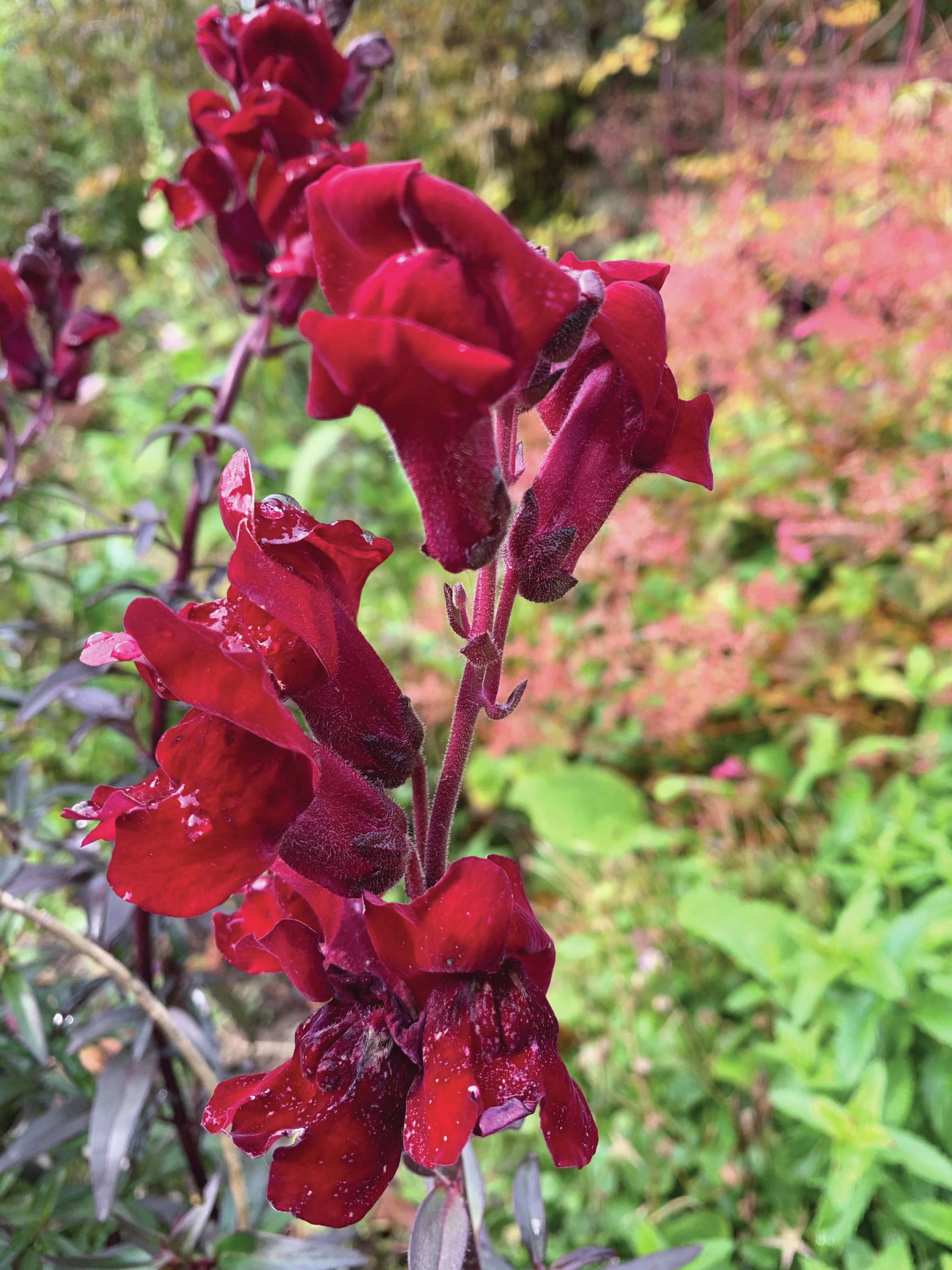Our almost 10-year-old granddaughter, Marguerite, finds weather interesting and follows Homer forecasts. She has deduced that “… Homer has no transitional seasons.” The significant amount of snow on the mountains would confirm her conclusion. For those of us who live here, the idea of buttoning up for the coming season is presenting itself.
There are about 10 mountain ash trees on this street and each of them change color at a different time. This makes for a sense of complacency that fall will last ever so long, that we have all the time in the world to get some important tasks done. It would be wise to get started sooner rather than later.
The leaves that have fallen on your lawn would be best served if you mowed them. That’s right, just mow them — no need to rake. They will supply the tree from whence they came with food for the winter. It is akin to not bagging your grass every time you mow; let the trimmings feed the lawn.
There are those who like to mulch their perennials with leaves. Well, from my experience with that, too much of good thing can be damaging. I have read over and over that piling leaves on your perennials will do the trick, so, of course, I had to try it and ended up with a matted mess in the spring and a suffocated delphinium. What does happen, most effectively, is the leaves that naturally blow into the beds are just enough to create a lovely light layer. I let them be. If you feel more mulch is needed, wait until either we are frozen solid or a good layer of snow has arrived and then toss some spruce boughs over your lovelies.
As much as I want each and every one of you to have a compost pile, something that humanity has been doing for eons without a single tome or article to guide them, I am now realizing that may be a pipe dream. For the life of me I do not understand why you find it to be such a challenge. That said, you might consider sending in a soil sample to the Homer Soil & Water Conservation District, 432 East Pioneer Ave.; call 235-8177 for more information or check out their website at www.homerswcd.org. My hope is that, if nothing else, the condition of your soil will improve if you follow an official type person’s dogmatic instructions.
Since I brought up compost piles, I might as well forge ahead and note that if you have anything that is diseased, please don’t add it to your pile. For instance, our potatoes, once again, have scab, thus the peelings will not go into the pile. Nor will the foliage from the peonies which we will burn. It could contain the fungus botrytis so it’s best to eliminate them from the garden.
This brings me to the quantity of garden waste that is produced when we harvest. So much more seems to go into the pile than we eat. I have been loaned a book. “Let’s Eat France!” and there is an interesting page that addresses parts of plants that I toss that the French eat. For instance, it would absolutely never occur to me to take the roots of the leeks, dip them in batter and fry. Perhaps if we made more use of the entire broccoli plant we would need fewer of them. Think about this.
Speaking of broccoli, the staggered planting continues to prove interesting. The plants are enormous. Never have I seen such huge plants, but they have ceased to produce any heads, any side shoots, any anything. So, instead of them pulling nutrients from the soil that will better serve next year’s crop, they have been eliminated, chopped and piled up to be added to the compost when the bears that seem to be everywhere have decided that enough is enough and go to bed.
My neighbor, Rachel, seeded in her carrots a month late and was not expecting much of anything by way of a harvest. Her mother noted that Rachel’s carrots were usually too big and would split so perhaps later was an advantage. This proved correct and I plan on following suit. The three-and-a-half pound carrot that made its way into a beef stew found its perfect use, but, really, who needs a three-and-a-half pound carrot?
We have harvested all of the carrots and are attempting to store them in a tote with holes drilled in it. The carrots are layered with damp sawdust and I’m just crossing my fingers that the weather cools enough to keep them going. Yet another attempt at storing root crops without a root cellar.
I have completely stopped deadheading the annuals. They can strew their seeds hither and yon and the perennial beds will be the better for it.
I’ve been introduced to an interesting BBC production, “The Victorian Kitchen Garden,” and in the last one, the gardener forces lily of the valley for Christmas blooms. Well, you can believe that I’m not going to let this alone until I have successfully forced some. But the catch here is that they are a spring addition to the garden, not fall, thus no one carries them now, not even catalogs which will gladly put me on the spring list. Nope. I want them now. They need to chill for about six weeks and then get potted up.
A friend is digging up some of hers so we will both be making a stab at this. Wish us luck.
We have a hummingbird feasting on the clematis alpine and Dropmore honeysuckle. Keep your eyes and ears open. They are busy and noisy and often stay well into November.
Keep gardening — it isn’t over.
Rosemary Fitzpatrick is a longtime Homer gardener and has been writing Kachemak Gardener since 1990.


